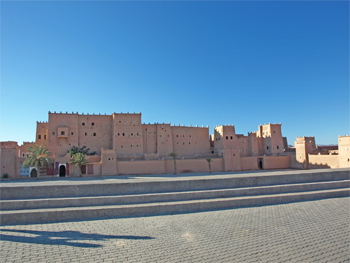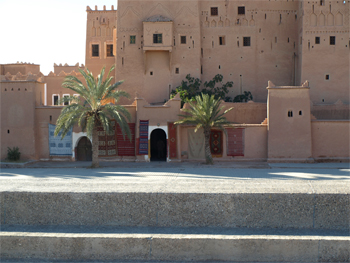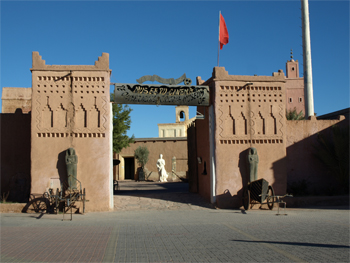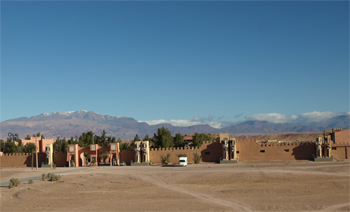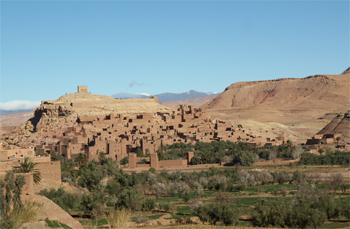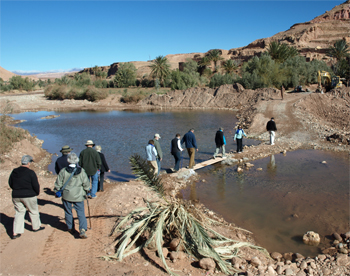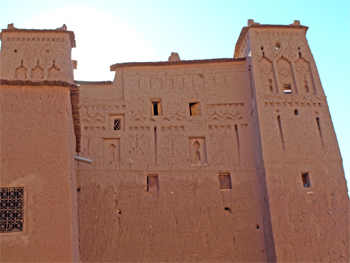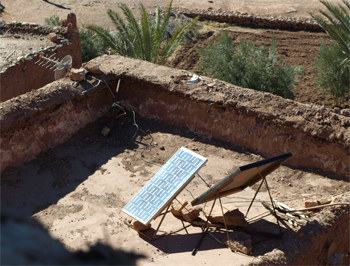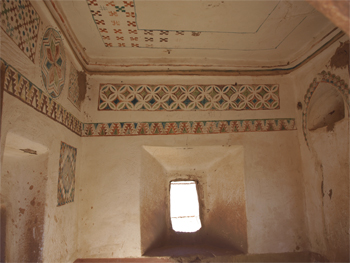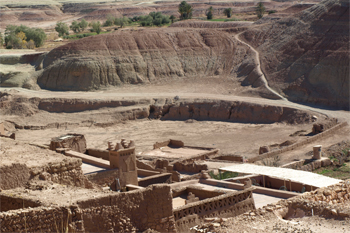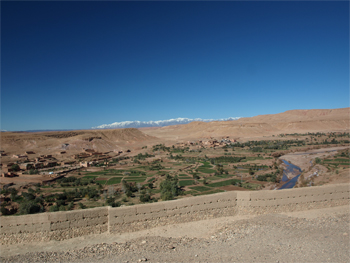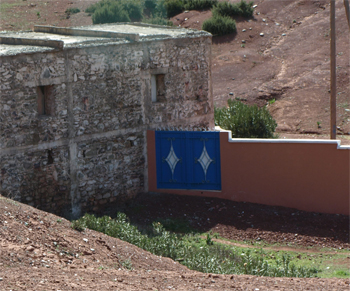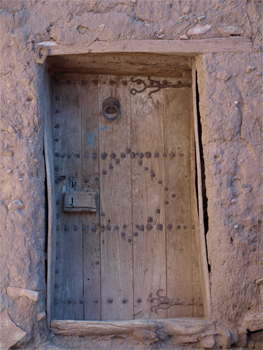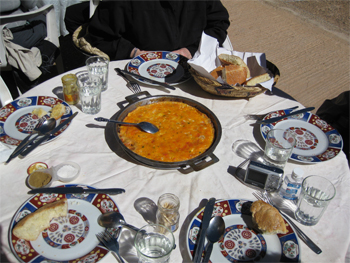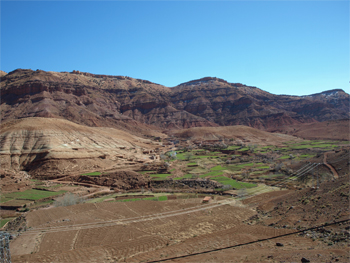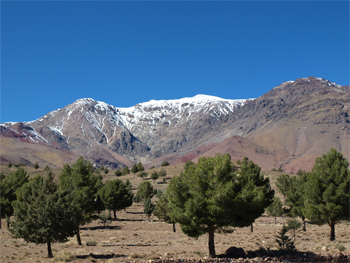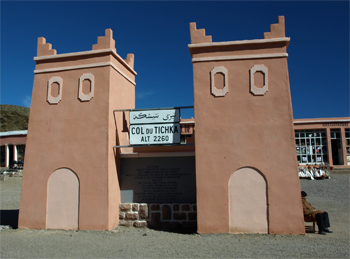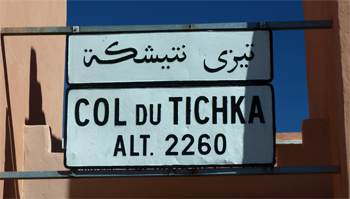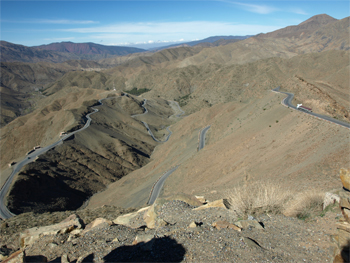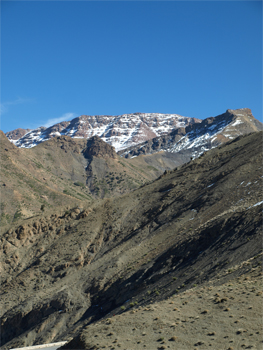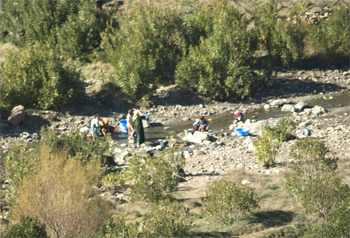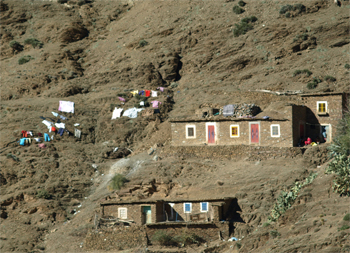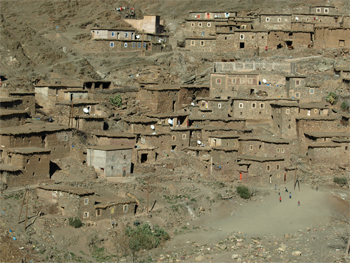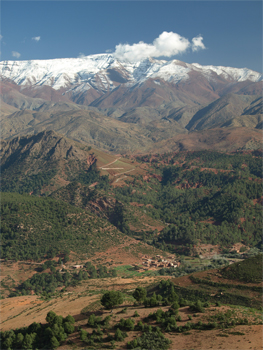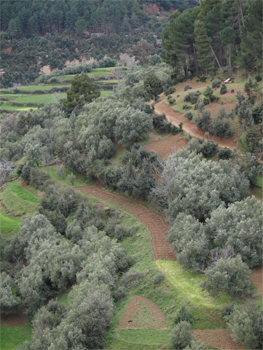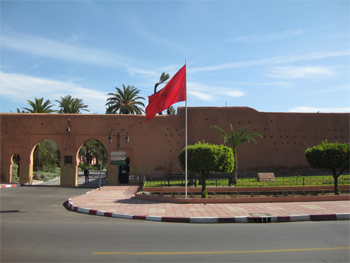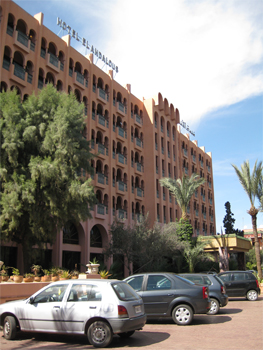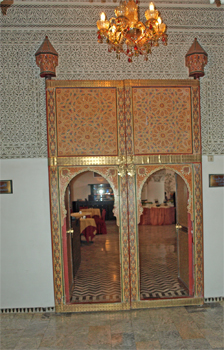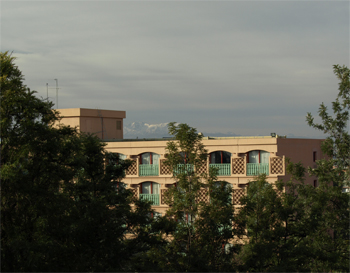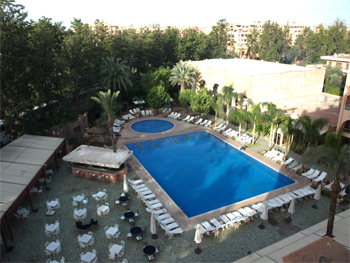Mon., 2/14/11 - Valentine's Day - Ouarzazate to Marrakech
Ouarzazate, the film capital of Morocco, is a new town created by the French to serve as an outpost for the French army to stop people coming from the south and entering Marrakech. The city has continued to grow with new construction since the original Lawrence of Arabia movie was filmed here. The city has become the "city of cinematography" and has provided sets for many (70 plus) movies and employment for local people. Mohamed read us a lengthy list which included: Mummy 1 & 2, Jewel of the Nile, Cleopatra, Ten Commandments, Green Zone, Black Hawk Down, Gladiator, and Arabian Nights.
This morning on the way out of town we stopped to take pictures of Glaoui's kasbah, home of an early 20th c. governor of Morocco, first the back of it where servants entered and, later, the front approach.
We also took a look at the Atlas Studio that has filmed many movies and the CLA Studio that is used mostly for indoor TV sets.
Glaoui's Kasbah
|
Glaoui's Kasbah |
Museum of Cinema
|
Movie studio |
Movie studio |
I came all the way to Morocco to take this picture!
|
We stopped at the 12th c. caravansary, which is a group of kasbahs in Ben Ait Benhaddou. Twelve families are living here and working on the restoration. The kasbah we entered and climbed to the top of, had a courtyard for caravan animals, many small rooms for storing trade goods, and four lookout towers used as silos for wheat and barley. Mohamed took us into a "house" kitchen where a woman made bread for us. It was warm with a smoky flavor. I think all 16 people in our group love Moroccan bread!
We climbed all the way to the top and looked out at a 360° panorama, which included the arena where scenes from the Gladiator movie were shot. (Marge and I got the DVD of "Gladiator" from our library and where so pleased to see the arena bowl and the kasbahs in the background of several of the scenes. We were there!)
We crossed the High Atlas at Col du Tichka pass - 2260 meters (7415 feet) high. The landscape changed to smaller farm plots and villages and walnut trees and pine and cedar. The road over the pass was at least 60 km of very narrow, windy road built by the French around 1930. The colors on the mountainsides varied from green to red and brown and gray with snow at the top. On the west side things became greener and the farms larger, but still small enough to be worked by hand or donkey. We drove through a forest of pine and oak trees which is a government owned reserve for hunting wild boar - mostly by Spanish and Italian hunters.
Top of the pass
|
|
Another mountain road |
Views of the mountains
|
Doing laundry in the stream |
Hanging the laundry out to dry
|
Typical village with kids playing in the open, flat spaces |
Mountain views
|
Cultivated land
|
Poor village |
We arrived in Marrakech by 5:30. This city is 95% Berber and has 300 days of sunshine a year. It is known as a "garden city" and has several large gardens and olive groves and many wide streets lined with palms or olive or orange trees. It is also a "museum city," which includes an Yves St. Laurent museum.
Marrakech city wall |
Hotel El Andalous
|
Door to the dining room - the sill is raised so you have to step over it to get into the room |
View from our room |
The pool - the French and Germans were swimming daily - too cold for us
|
|
After dinner we all walked a little down Mohammed 6th Ave.
